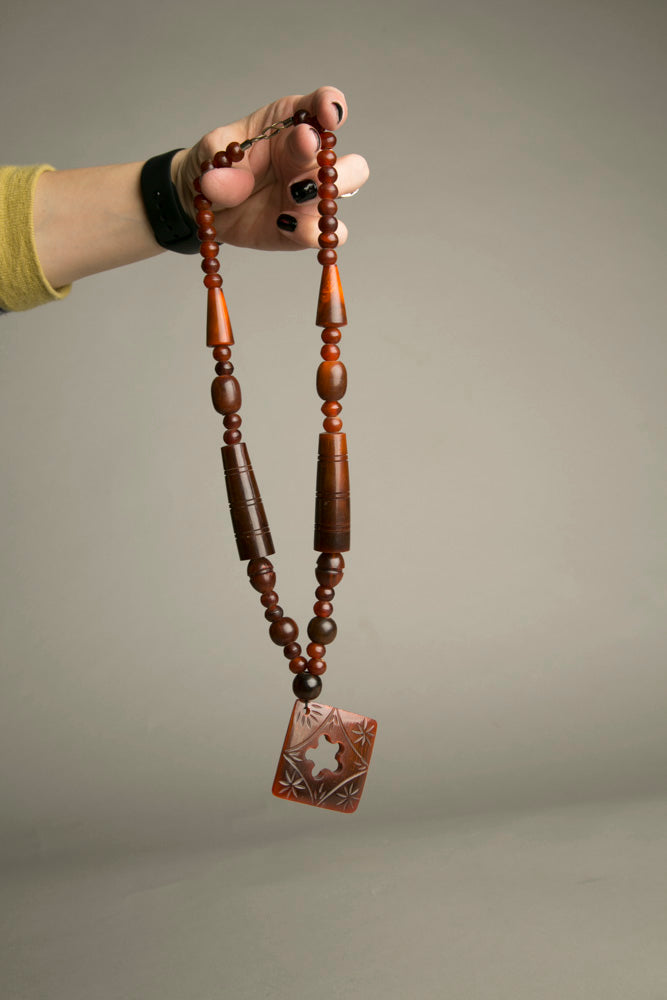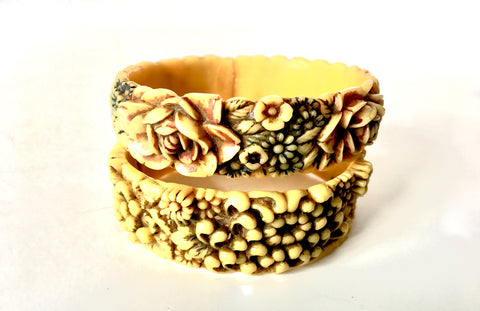
Celluloid, Bakelite, and Plastic: What Are They and How Are They Different?
Celluloid, Bakelite, and Plastic: What Are They and How Are They Different?
By Paige McKirahan
You walk into Barney’s New York with the intention of accessorizing for a night on the town and come to find bangles of all colors. They’re beautiful, light, and handmade. You wonder how normal plastic could look so elegant and check the tag, realizing it is made of vintage bakelite. What is this gorgeous material?
Celluloid and bakelite are vintage jewelry staples often mistaken for the normal plastics that are usually casted to make jewelry. These materials are among some of the first man made plastics on the market. Celluloid predates bakelite and was created in an attempt to win a contest calling for someone to create a substitute for ivory in the 1860s. Though it did not win the contest, its creator, John Hyatt, chose to begin a manufacturing company that used the plastic to create billiard balls. The problem, though, was that the material was flammable; it would create small explosions on billiard tables if the balls knocked together! It also constantly sparked fires in hot projection rooms on movie sets when used to create movie film. To identify this plastic, you don’t need to wait for it to accidentally catch fire; the easiest way is to rub the piece vigorously and smell it. If it is real celluloid, it should smell similar to a ping pong ball.
Now, when Bakelite emerged on onto the scene in 1909, it made a sort of different explosion. It became wildly more popular than celluloid because of the simple fact that it didn’t quite literally explode and was more lightweight. When it first came into circulation, it was used primarily for industrial purposes until it started becoming available in a variety of colors. This inexpensive material then became a huge favorite of jewelry makers and differs from regular plastic jewelry as it is hand carved or polished into its design. You can check to see if your bakelite isn’t an imposter by using the 409 test. You dip a cotton swab in 409, the common household cleaner, and touch a small area of the piece. Be sure to touch a part of the jewelry that will not be seen! If it is true Bakelite, it will leave a yellow stain on the cotton swab.
As a collector or simply a jewelry lover, it pays to know if you have a piece made with one of these materials as their value has only increased over the past few decades. Authentic pieces can sell for thousands of dollars and are coveted by many in the collecting community. So now that you know the what and how on celluloid and bakelite, we invite you to pull out your vintage pieces and start testing!






